 The likely implications of Ntaganda's flight
The likely implications of Ntaganda's flight
On
Monday March 18, former leader of the Congolese rebel movement CNDP,
Gen. Bosco Ntaganda, appeared unexpectedly at the United States embassy
in Kigali to hand himself over to the Americans. He was smarting from a
military defeat at the hands his erstwhile ally and now rival, Sultan
Makenga, who heads the M23 rebel movement in eastern DRC.
After
walking through Virunga National Park that covers the border areas of
Congo, Rwanda and Uganda, he drove to Kigali most likely from Ruhengeri
unnoticed by Rwanda’s security forces. Rwandan officials were taken by
surprised when they heard from the Americans about Ntaganda’s appearance
in their capital seeking extradition to The Hague where he is wanted
for war crimes.
The previous day, March 17, the ramp of Ntaganda’s defeated army had
entered Rwanda seeking refugee alongside their political leader Jean
Marie Runiga. Rwanda placed Runiga under house arrest as it prepared to
hand over the 700 combatants with him over to the UN as refugees.
The recent
flare-up in the fighting in Congo has taken the international community
by surprise as well. For more than a year, the international community
bought tall tales by the UN “panel of experts” that there was no
rebellion in Congo but a Rwandan invasion of the country. The M23 was
seen as a Rwanda proxy and American and European journalists wrote
stories of how its troops were actually from the Rwandan army. Thus,
when M23 broke into rival factions and began a ferocious internal fight,
the international media went speechless. They could not reasonably
claim that this was a fight among different battalions of the Rwandan
army.
Regional confusion
The
internal fighting within M23 has also thrown the regional efforts to end
that conflict in confusion. At the beginning of March, Presidents
Joseph Kabila of the Democratic Republic of Congo, Eduardo Dos Santos of
Angola and Jacob Zuma of South Africa had a meeting in Luanda, Angola.
During the meeting, Zuma and Kabila argued that SADC should move its
forces to fight the M23 rebels. Zuma, sources say, is convinced that M23
is the disguised hand of Rwanda. But Dos Santos objected saying that he
knows the problem of DRC is more than Rwanda and M23. It has a lot to
do with internal problems in Congo.
“Comrades,”
Dos Santos reportedly told his colleagues, “even us [Angola] have many
problems emanating from DRC. Many guns are being trafficked from DRC
into our country. Criminals and potential terrorists are crossing as
well. So it would be wrong to say that the M23 problem is caused by
Rwanda. Kigali may have contributed to it but it is not the source of
the problem. The root cause is the inability of Kinshasa to govern most
of its territory.”
Dos Santos
advised that rather than send forces to fight rebels inside DRC, SADC
should help Kinshasa find a negotiated settlement with them – “in order
to achieve internal social integration.” He said Luanda has been deeply
involved in the problems of Congo for nearly 40 years and most of this
time as a victim. This time, he added, Angola will not contribute troops
to fight Kinshasa’s wars – a solution he said cannot work.
“But if
you comrades feel strongly that we intervene militarily we must,” he
added perhaps sensing unease on their faces, “then in the spirit of SADC
Angola will contribute money but not troops to that effort. And I would
advise that all of us help our young brother here find a political, not
a military solution.”
Sources
close to Luanda say that Dos Santos held his position firmly even in the
face of pressure from Zuma as Kabila watched in silent wonderment.
Finally, and in spite of his advice, SADC went ahead to recommend
deployment of troops inside DRC to fight “wrong elements” (read M23).
The countries to contribute to this force are South Africa, Tanzania and
Mozambique. This is a potentially explosive decision.
Presidents
Zuma and Jakaya Kikwete of Tanzania, informed sources say, do not see
eye-to eye with President Paul Kagame of Rwanda on DRC. Kikwete’s vision
is reportedly blurred by internal failures of his government. Under
him, Tanzania has seen unprecedented corruption and failure to deliver
basic services to the people. The situation is not helped when he is
constantly reminded of Kagame’s success in the little neighbor, Rwanda.
Zuma and
Kagame’s relations meanwhile are not good either. First, the South
African president has been under the influence of Bill Masetera, a
former intelligence chief under Thabo Mbeki and close friend and ally of
Rwandan dissident generals Kayumba Nyamwasa and Patrick Karegyeya. To
make matters worse, in a meeting of AU in Addis Ababa in 2011, Kagame is
said to have directly interrupted Zuma’s speech in defense of then
Libyan leader Muammar Gadaffi by saying he had seen “money bags been
moving around” to pay off various heads of state to support Gadaffi.
Zuma did not take this accusation lightly and it added insult to injury.
It is in
this context that two of the three countries sending troops to DRC have
an axe to grind with the country accused of sponsoring a rebellion.
Regional military experts say that the South African army may be good in
equipment and training but is weak in experience. This is even more
pronounced when it comes to fighting a counter insurgency in a country
that is densely forested, with a bad terrain, and speaking a language
alien to the South Africans. The Tanzanian army, on the other hand,
while well trained but not-so-well equipped has not seen action in 30
years. Secondly, the TPDF has never fought a counter insurgency.
“The South
Africans and Tanzanians are preparing to deploy in DRC with a lot of
enthusiasm and confidence of success against M23,” a well placed
regional expert on regional security told The Independent on condition
of anonymity, “But they are underestimating the capabilities of M23.
These people have been fighting in the jungles of eastern DRC for over
18 years and know every nook and cranny of their area. They have also
accumulated considerable experience. So, mark my words: They are not
going to be a walkover as the South Africans and Tanzanians would like
the think.”
Therefore,
experts say that the likelihood that the Tanzanians and South Africans
may get badly clobbered by M23 is very high. And if this happens: then
what?
“It is
very possible the Tanzanians and South Africans will not believe that
they have been beaten by M23,” the expert told The Independent, “They
are likely to suspect it is Rwanda fighting them. And if this is the
case, and depending on the level of humiliation that may be inflicted on
them, they, especially Tanzania, may decide to attack Rwanda in
retaliation. Then you will have an international war – the unexpected
outcome of an ill-thought out intervention in Congo.”
Internal M23 fight
Or may be
not. For the last two weeks as the armies of Mozambique, South Africa
and Tanzania trained and prepared to deploy in DRC, M23 began a
ferocious internal war against itself. The forces of Makenga began
pitched battles with the forces commanded by Ntaganda.
In the
murky jungles of rebel infested DRC, it should not surprise anyone that
Ntaganda is resurfacing at this point. Informed sources say, Runiga, has
in fact been an Ntaganda stooge all along.
M23 has
for long had factions. Although M23 officially claimed that they had
nothing to do with Ntaganda, he left behind a wing, also known as the
Kimbelembele that paid allegiance to him led General Baudouin Ngaruye.
These were always in constant but invisible friction with the the
pro-Nkunda wing, the Kifuafua led by Sultani Makenga.
Sources on
the ground say the intra-M23 battles have been ferocious, brutal and
bloody – worse in their sheer mercilessness compared to anything
Congolese have seen in battles against Kinshasa – a family feud turned
nasty.
Last week,
Ntaganda matched his forces from Runyoni and attacked Makenga’s camp at
Cyanzu. He also attacked Makenga’s troops in Rumangabo where the main
M23 armories are. This forced Makenga to call upon two of his forward
battalions north of Goma in the area of Kirimanyoka to come and
reinforce Rumangabo. He also called his forces based around Rucuru to
come reinforce Cyanzu. This withdraw by these battalions from these
towns led the FDLR, the forces of the former Rwandan army that committed
genocide in 1994, to occupy all the areas near Rucuru and Rugari. The
FDLR in the presence of MUNSCO later handed over Rucuru and Kiwanja to
the Congolese army.
However,
having repelled the Ntaganda attack, Makenga now moved his forces and
encircled Rucuru until he forced them to withdraw before he could
annihilate them. The Congolese obliged – showing that even when M23 is
fighting itself, the Congolese army is unable to take advantage of the
situation and make counter offensives that can stand.
The new
developments have thrown the international community, its activist arm
led by human rights organizations, and its propaganda arm led by the
international press, into disarray. For a long time, the international
community refused to recognise M23 as a domestic Congolese problem with
grievances against Kinshasa. Instead, they insisted M23 was actually the
Rwandan army itself. Tall tales of large movements of troops crossing
the border from Rwanda into DRC were relayed to the world. Added to this
were allegations that large quantities of arms and ammunition were
being transported from Kigali to Goma to support the operation.
Shock and shame
A report
by a UN “panel of experts” that many informed people saw as little more
than a shoddy and poorly written work of fiction was given Biblical
status.
The belief
that M23 was the hidden work of Kigali was so widespread that obvious
facts were ignored. Even when Kabila fired his chief of staff for
selling arms to the rebels, the human rights community and its
propaganda arm, the international press, refused to report the matter as
it would have undermined the credibility of their claim that it was the
Rwandan army fighting in DRC and supplying itself the weapons. So
powerful was the desire to find Rwanda guilty that nearly every
international donor began cutting aid to Rwanda.
The
fighting among the different factions of the M23 has taken the entire UN
system, its human rights allies and the international press by shock
and surprise. Without Rwanda to play the role of villain, the
triumvirate is now confused. With tens of thousands getting displaced,
thousands of refugees flocking into Rwanda, Uganda and Burundi, with
hundreds dead anddying, there is only a murmur in the international
press about the evolving humanitarian crisis in eastern DRC. The problem
is that the international community has no one to blame this time.
Informed
sources say the current feud within the ranks of M23 is both unfortunate
and sad given that Tutsi citizens of DRC face an existential threat
from Kinshasa. The leaders of Congo have been openly calling upon
different communities in the eastern region to exterminate all Tutsi in
that region. Therefore, M23 emerged with strong and legitimate
grievances, which the international community through the UN sought to
suppress by shifting the blame from Kinshasa to Kigali.
However,
from the beginning, this newspaper reported that Kigali was anxious and
uncomfortable with M23. Although it shared their legitimate fears,
strategists in Kigali felt that Congolese Tutsi are too undisciplined to
work with. Sources close to Kagame have always said the president
thinks the leadership of Kinshasa and the rebels are all ideologically
bankrupt. He has also said this in an open address to the Rwandan
parliament. Given his strong views on this matter, it was unlikely that
Kagame was the man to throw in his lot with M23.
Besides,
Rwanda is aware that although it can influence M23, it does not have
control over it. For example, one of the factors behind the current
infighting in the rebel group is clan politics and rivalries. Ntaganda
is from the Bagogwe clan alongside Baudouin Ngaruye. Meanwhile Makenga
is also from the same Bagogwe clan but grew up in Rucuru among
Banyejomba clan of former CNDP leader, Laurent Nkunda. Ntaganda has
always seen himself as a rival to Nkunda and enjoys large support among
the Bagogwe. This meant that Makenga could never rival him for support
in the clan which made him court the Banyejomba. Ntaganda has since used
his identity to wrestle control from Makenga.
Signs of
that M23 would have a fight have always been there. Makenga and Ntaganda
have never been friends. When Makenga began M23, he made it clear he
had no intention to protect Ntaganda from the International Criminal
Court in The Hague. In fact, at the time M23 was formed, Ntaganda who
had moved through the Virunga Park was close to Makenga forces. They
ignored him. Knowledgeable sources say that among Makenga’s troops were
many officers and soldiers who had previously been under Ntaganda’s
command and therefore loyal to him. Makenga needed time to consolidate
his position.
However,
the turning point in M23 came when Runiga became president of the
movement. His first action was to negotiate an alliance with Ntaganda.
Sources say that Runiga, who is not a Congolese Rwandese but a Mushi,
saw that Ntaganda had a following among the M23 troops and had a lot of
money and is backed by a strong clan. Makenga, on the other hand, had
made Runiga president because as a Mushi and a bishop, he had the
stature and following that would expand the political base and appeal of
M23 among other Congolese communities. He is well spoken, educated and
therefore presentable.
However,
when M23 took Goma, the region asked him to leave. In fact Museveni
invited Makenga to Kampala where he formally told him that if he needs
help from the regional leaders to present his grievances, he needs to
withdraw from Goma. Makenga agreed. However, Runiga did not want to
leave Goma because he thought it was giving them great political
leverage. He called a press conference and put forth a set of political
conditions before they could withdraw. He had not consulted Makenga who
interpreted it as the hidden voice of Ntaganda.
This was
the first and major disagreement between Runiga and Makenga. Runiga was
now challenging Makenga claiming he was the supreme political leader. He
also promoted Col. Baudoin Ngaruye (now in a refugee camp in Giseyi) to
Brigadier General – the same rank as Makenga. Nyaruye is very close to
Ntaganda. Makenga saw this as Ntaganda taking over M23.
When
Makenga returned from Kampala, he wanted to arrest Runiga. However,
after a lot of political negotiations he abandoned the idea. But the
battle-lines had been drawn and it was only time before the two sides
would flex muscles in eastern Congo.
The specific point of departure between Runiga and Makenga emerged from the direction of negotiations in Kampala.
Makenga,
sources say, felt the negotiations should be narrowed down to focus on
breaches of the 2009 agreement that led to the M23 rebellion. He focused
on ethnic persecution and attracted other ethnic groups to his agenda.
Runiga, as
a politician wanted to broaden the demands to governance. He saw that
the broader platform would attract more support among non-Rwandan
Congolese who feel oppressed by Kinshasa.
These
inter and intra clan and factional rivalries meant that Rwanda could not
actively support any of the groups in eastern Congo except at the price
of being dragged into what was potential chaos.
Courting Museveni
Therefore,
from the beginning of this conflict, and if the international community
was genuinely committed to solving the problems of DRC, it needed
Rwanda’s aid. However, ignorance and prejudice combined with
self-interest to push the international community into isolating Rwanda.
Without Kigali to cajole and threaten M23, the Tutsi insurgents in DRC
were a time bomb.
Meanwhile
Kinshasa was always only happy to find an international scapegoat for
its own internal failures and Rwanda was a perfect one. However,
Kinshasa knew all too well the domestic dynamics – and therefore Kabila
kept direct personal contact with both Ntaganda and Makenga, calling
each one of them by phone regularly.
Sources
say that through this interaction, Kabila was able to skillfully exploit
historical animosities between the two men and their clans – trying to
woo both by bad mouthing the other. Congolese intelligence may be
corrupt and incompetent in almost everything under the sun but it is
efficient in one thing – spreading rumours. Thus, sources say, Congolese
intelligence led each side (Makenga and Ntaganda) to believe that the
other was working with Kinshasa to clinch a deal behind the other’s
back. This increased internal suspicions, which fed into historical clan
rivalries. However, what Congo lacks in military and political capacity
it may achieve in diplomacy.
Since
2011, when relations between Uganda and Rwanda significantly improved
significantly, President Museveni and Kagame have been viewed as natural
allies. Museveni is the lead mediator on the conflict in Congo. As new
alliances are forged, it appears Rwanda’s enemies might want isolate
Kagame even from Museveni.
There is a
risk if some parties play on their previous animosities to draw the two
leaders apart by taking positions that may favour Kampala but hurt
Kigali.
When
Museveni lost his father, Kagame was expected to fly to Uganda for the
funeral. He did not and sent condolences sparking speculation.
Meanwhile,
Kikwete flew directly from Addis Ababa to Rwakitura to attend the
funeral. Later Kabila flew from Addis Ababa as well to Kinshasa before
flying to Rwakitura to lay a wreath on Mzee Amos’ Kaguta’s grave,
apparently, sources claim, on the instigation of Kikwete. In the end,
observers say, the big security picture in the region could be decided
by small matters such as these.
- See more at:
http://www.independent.co.ug/cover-story/7583-how-dr-congo-conflict-could-ignite-regional-war#sthash.rDWxEUMp.dpuf
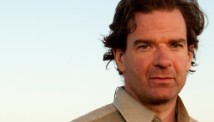
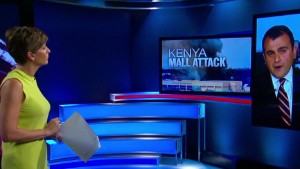
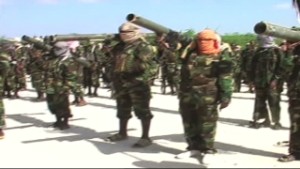
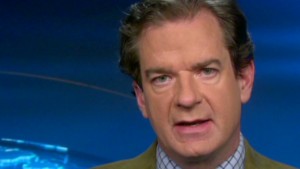

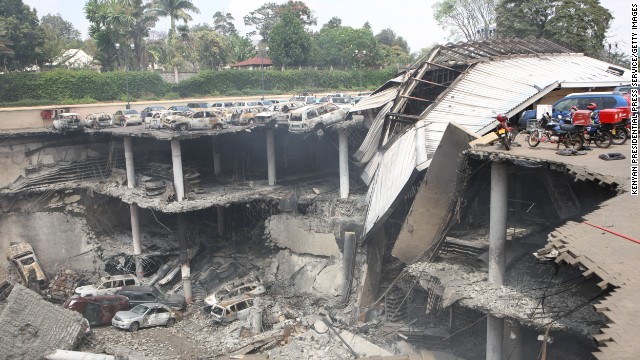 Images released by the Kenyan
Presidential Press Service on Thursday, September 26, show scenes of
destruction in the parking deck outside the Westgate mall after the
four-day siege by militants.
Images released by the Kenyan
Presidential Press Service on Thursday, September 26, show scenes of
destruction in the parking deck outside the Westgate mall after the
four-day siege by militants.
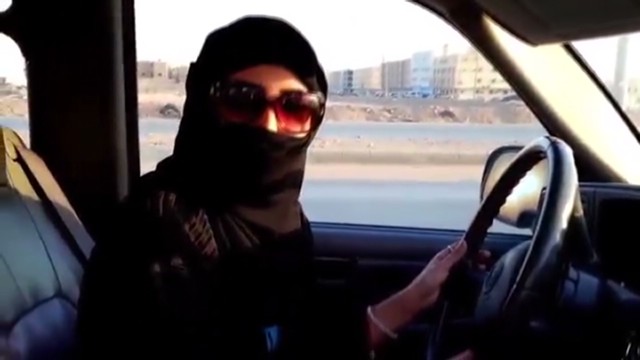
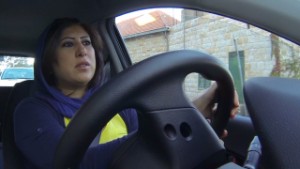
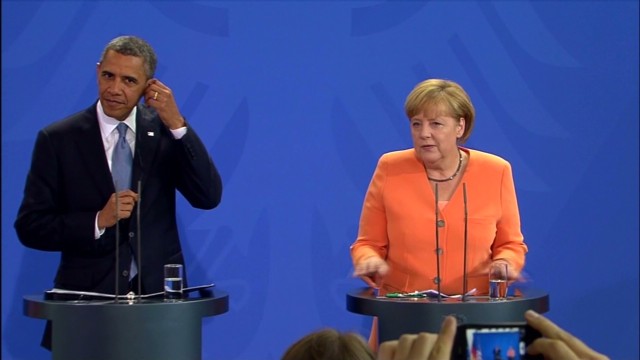
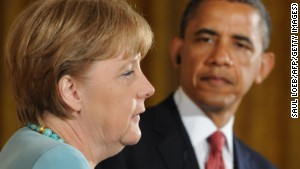
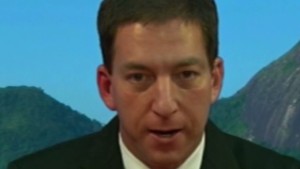


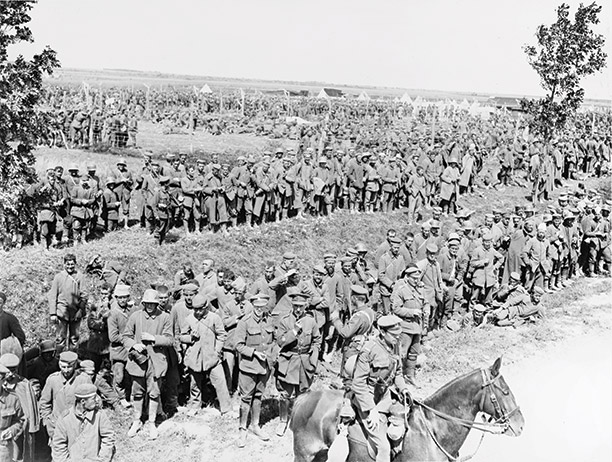




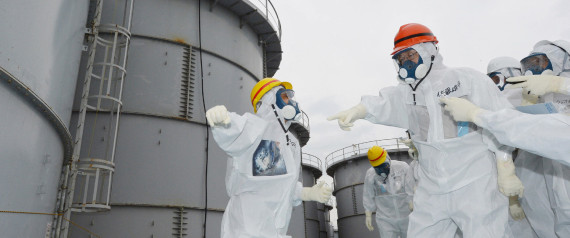




 The likely implications of Ntaganda's flight
The likely implications of Ntaganda's flight



